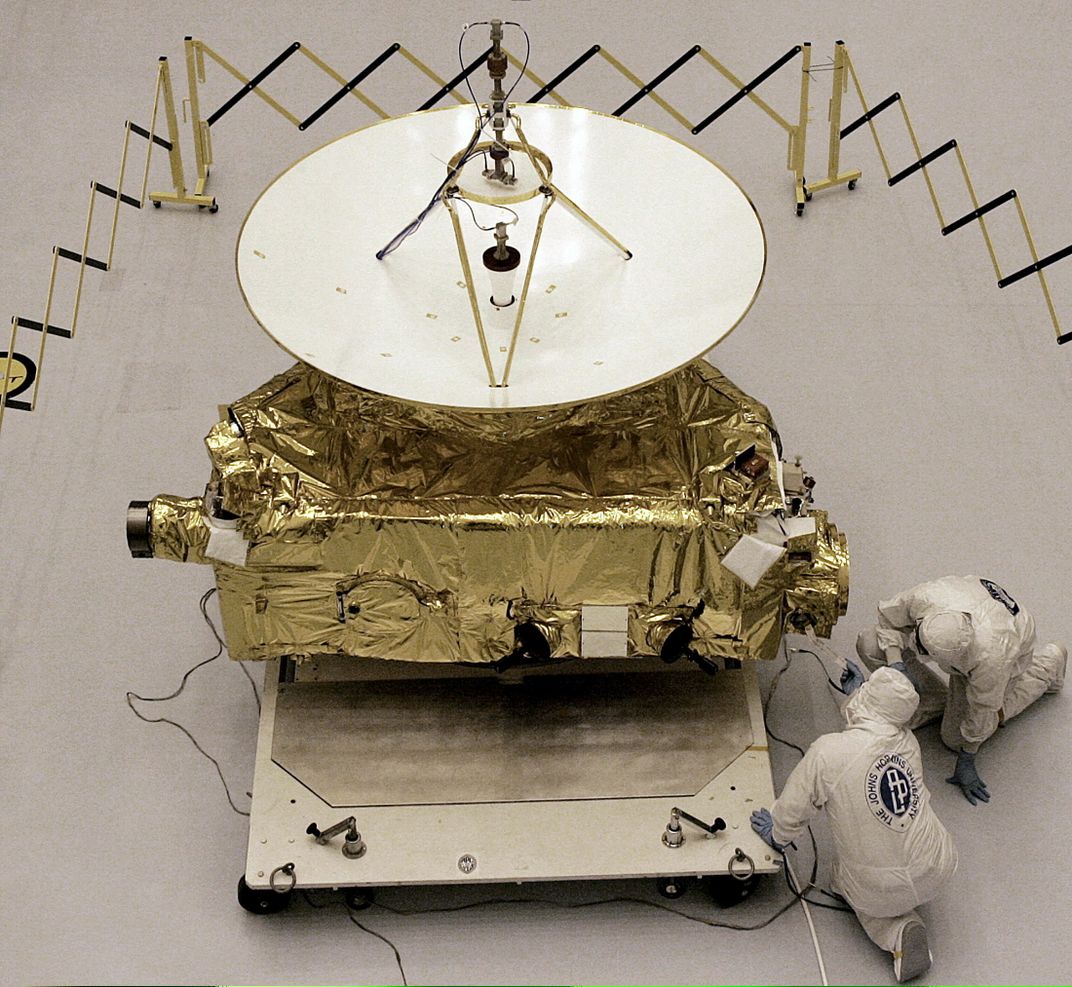The Golden Record 2.0 Will Crowdsource A Selfie of Human Culture
Inspired by a similar effort in the 1970s, the project wants your help in creating a portrait of humanity to send out of the solar system
/https://tf-cmsv2-smithsonianmag-media.s3.amazonaws.com/filer/eb/8a/eb8ad0ca-1f1d-4364-aebc-dbab4f805b8c/golden-record.jpg)
In 1977, the Voyager 1 and 2 spacecraft left our solar system, carrying a “Golden Record”—a gold-plated phonograph record containing analogue images, greetings, and music from Earth. It was meant to be a snapshot of humanity. On the small chance that an alien lifeform encountered Voyager, they could get a sense of who made it.
“This record represents our hope and our determination and our goodwill in a vast and awesome universe,” said Carl Sagan who led the six-member team that created the Golden Record.
No spacecraft has left our solar system since Voyager, but in the next few years, NASA’s New Horizons probe, launched in 2006, will reach Pluto and then pass into the far edges of the solar system and beyond. A new project aims to create a “Golden Record 2.0”. Just like the original record, this new version will represent a sampling of human culture for NASA to transmit to New Horizons just before it soars off into the rest of the universe.
/https://tf-cmsv2-smithsonianmag-media.s3.amazonaws.com/filer/92/2f/922f4210-dfdd-4fa3-8bc1-0c1623b274ae/42-38844026.jpg)
The genesis of the project came from Jon Lomberg, a scientific artist and the designer of the original Golden Record. Over the last year he’s recruited experts in a variety of fields to back the project. To convince NASA of public support, he launched a website and put together a petition, signed by over 10,000 people in 140 countries. When Lomberg presented the idea to NASA earlier this year, the agency was receptive and will be releasing a statement with further details on the project on August 25. In the meantime, he and his colleague Albert Yu-Min Lin, a research scientist at the University of California in San Diego, gave a preview of their plan at Smithsonian’s Future Is Here event in Washington, DC, today.
/https://tf-cmsv2-smithsonianmag-media.s3.amazonaws.com/filer/a4/42/a44275d6-5334-4875-ae1a-49d5f93a1be9/jonlomberg.jpg)
New Horizons will likely only have a small amount of memory space available for the content, so what should make the cut? Photos of landscapes and animals (including humans), sound bites of great speakers, popular music, or even videos could end up on the digital record. Lin is developing a platform where people will be able to explore and critique the submissions on the site. “We wanted to make this a democratic discussion,” says Lin. “How do we make this not a conversation about cute cats and Justin Beiber?” One can only guess what aliens might make of the Earth’s YouTube video fodder.
What sets this new effort apart from the original is that the content will be crowdsourced. “We thought this time why not let the people of earth speak for themselves,” says Lomberg. “Why not figure out a way to crowd source this message so that people would be able to decide what they wanted to say?” Lomberg has teamed up with Lin, who specializes in crowdsourcing technology, to create a platform where people from all over the world can submit content to be included on the record.
/https://tf-cmsv2-smithsonianmag-media.s3.amazonaws.com/filer/8d/2c/8d2cf5af-c471-406c-961b-791f70ecfc3d/_ec19472.jpg)
NASA hasn’t committed any funding to the project, so Lomberg is charged with coming up with the capital required to put the message together. Lomberg will pursue online fundraising efforts, private funders, and possibly a Kickstarter campaign.
Once the world has put this message together, how do we get it there? New Horizons is already well on its way to Pluto, so it’s not as if we can plug in a thumb drive and upload the message data. Instead, the message will be transmitted in a somewhat old-fashioned way—over the radio. NASA uses a radio wave network called the Deep Space Network involving three satellites that orbit earth to communicate with its spacecrafts and probes out in the field. “It’s much slower than dial-up,” says Lin. Once New Horizons reaches Pluto, it will zip by the drawf planet collecting data, and then transmit all of that data back to Earth, which will take about a year. Once it’s done handing off the data, NASA will stream the data message to be stored on the probe’s computer system.

This summer, the Golden Record 2.0 hopes to begin accepting submissions. New Horizons will reach Pluto in July 2015, and if all goes well, the message will be secured in the probe's memory by the end of 2016.
Once New Horizons leaves the solar system, the chances that the probe will encounter extraterrestrial life are slim: the Milky Way galaxy is 100,000 million light years across, and no one knows exactly how big our universe is. If New Horizons does cross paths with extra terrestrial life, those alien organisms would need to be intelligent in order to comprehend the probe’s message. “Will they ever be found? Probably not,” says Lomberg.
But, perhaps more important than the message’s fate in space is it’s impact here on earth. When the original Golden Record left the solar system with Voyager, “the reception for it was almost uniformly positive. It excited kids. It got a lot of people interested in science,” says Lomberg. At the very least, the message will perhaps challenge us to contemplate our place in the universe.
For more information on the New Horizons message project, check out their project’s new website.
/https://tf-cmsv2-smithsonianmag-media.s3.amazonaws.com/accounts/headshot/Screen_Shot_2014-01-27_at_12.05.16_PM.png)
/https://tf-cmsv2-smithsonianmag-media.s3.amazonaws.com/accounts/headshot/Screen_Shot_2014-01-27_at_12.05.16_PM.png)